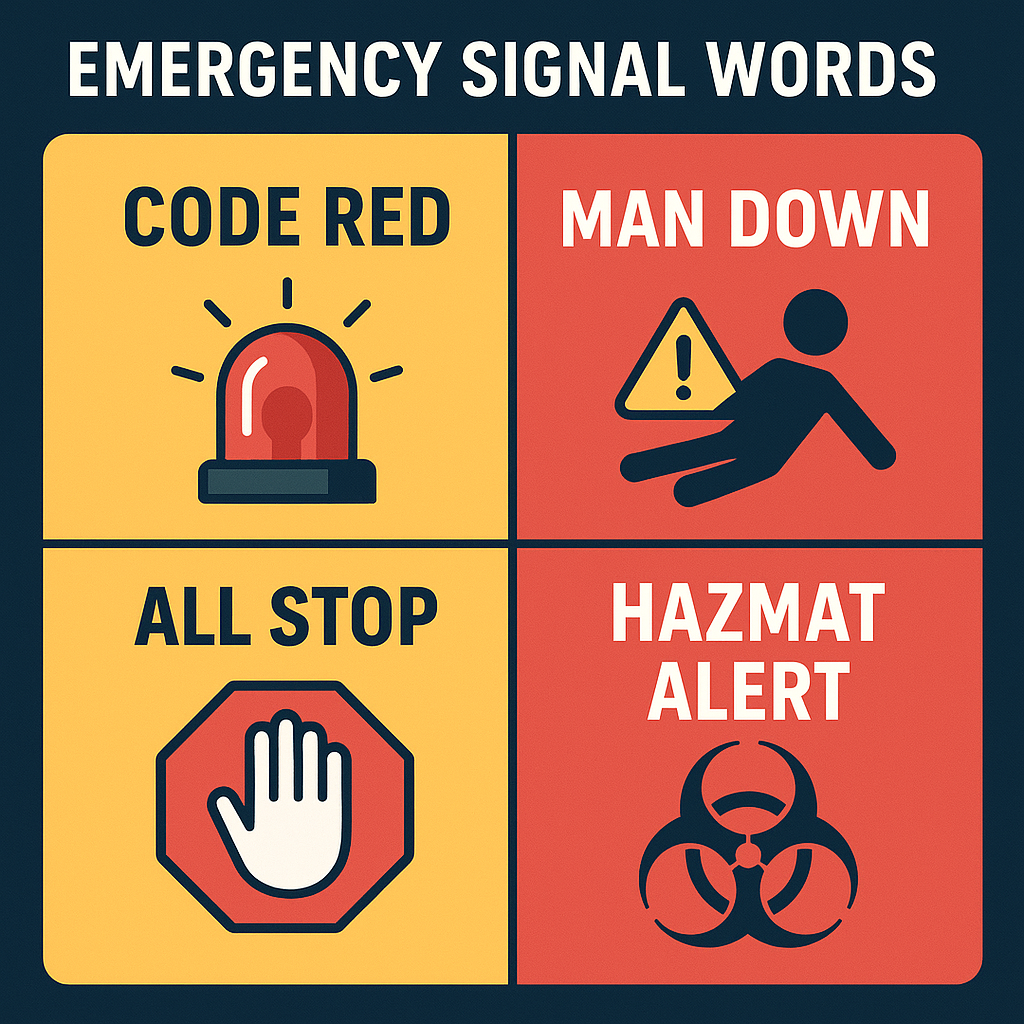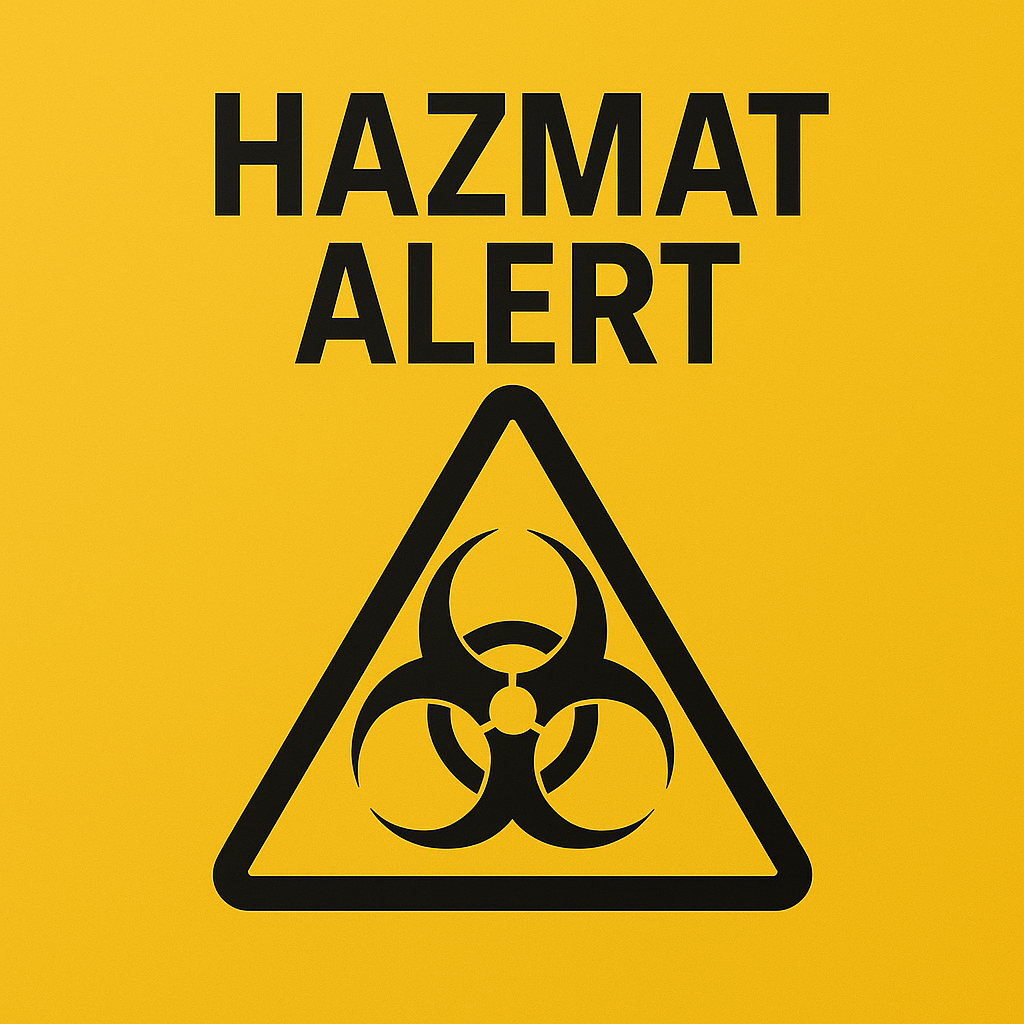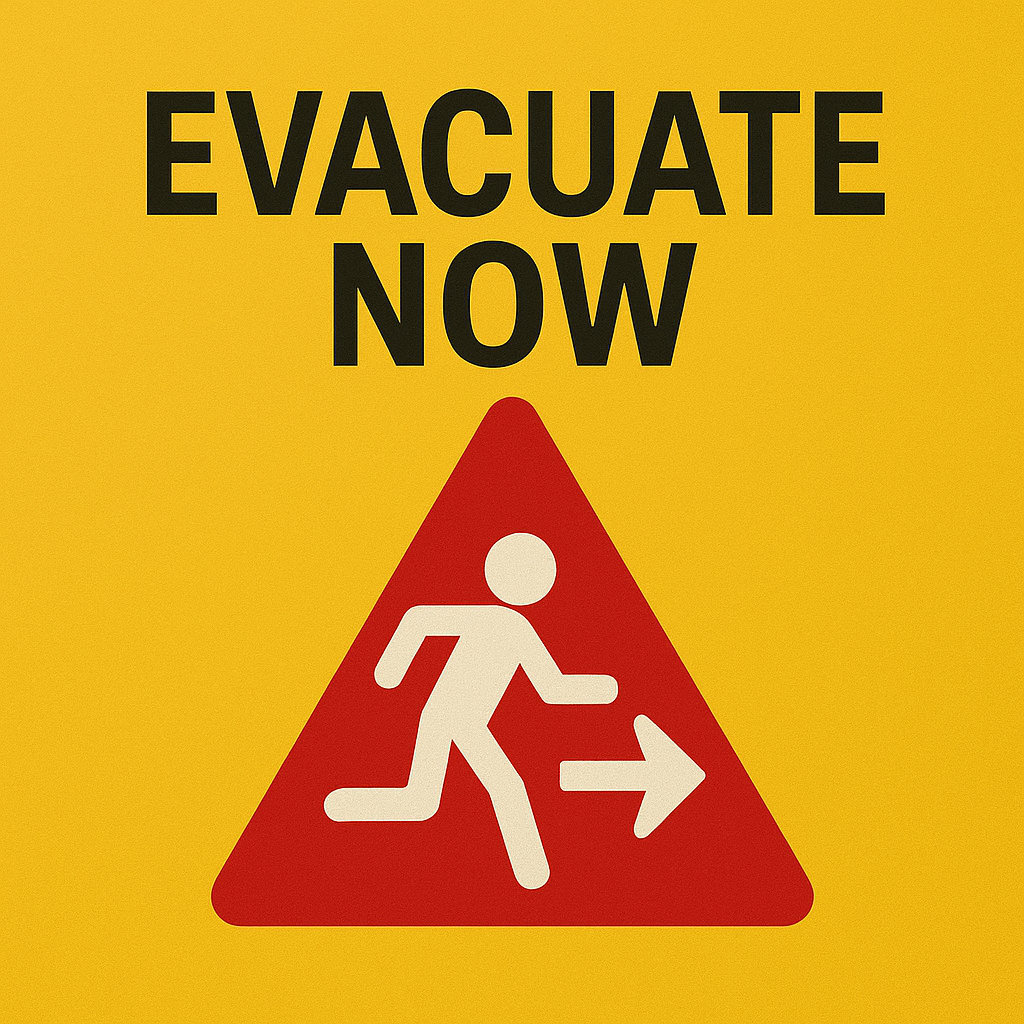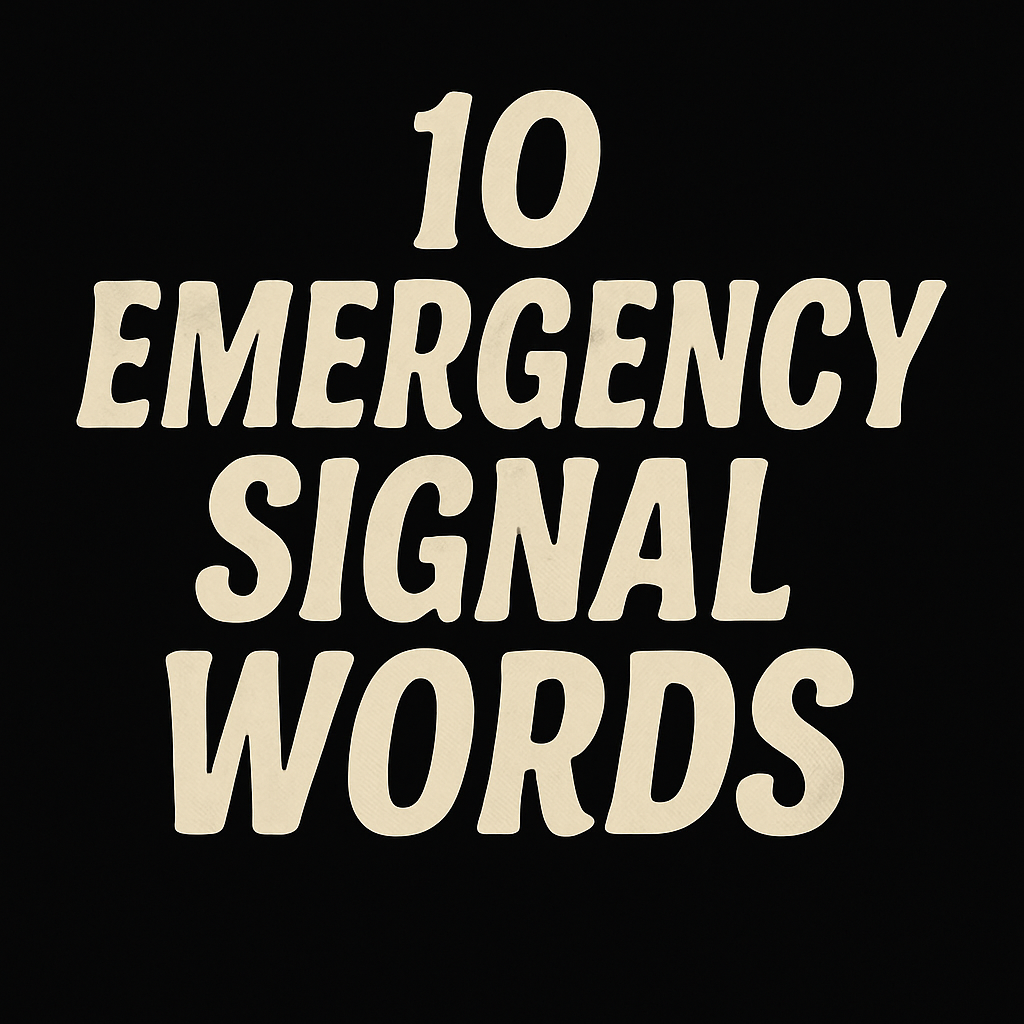Emergency Signal Words in Occupational Safety are vital tools for immediate, unambiguous communication in life-threatening situations.
These words and phrases are not just terminology—they are direct triggers for action, alerting workers, supervisors, and first responders to real-time hazards.

Whether it’s a “Code Red” in a hospital, a “Man Down” in a confined space, or a “HazMat Alert” in a warehouse, these words can save lives when seconds matter.
- Understanding Emergency Signal Words in Occupational Safety
- Why Standardized Emergency Language Matters
- Common Emergency Signal Words in Occupational Safety
- Signal Words in WHMIS, GHS, and OSHA Labeling
- Real-World Examples of Emergency Word Use
- Best Practices for Implementing Emergency Signal Words
- Frequently Asked Questions (FAQ)
- Conclusion: Why Emergency Signal Words Matter
Understanding Emergency Signal Words in Occupational Safety
At the core of any effective workplace safety program is clear communication, especially during emergencies. Emergency signal words are standardized phrases or codes used to:
- Quickly identify the type of hazard
- Communicate required actions
- Avoid confusion or panic
- Mobilize emergency response efficiently
They are often used in:
- Manufacturing plants
- Construction sites
- Hospitals
- Laboratories
- Oil and gas facilities
- Chemical processing environments
- Warehouses and logistics
These words help enforce the right response, from the right people, at the right time.
Why Standardized Emergency Language Matters
Without standardized signal words, workers may misunderstand the severity of a situation or how to respond. This can lead to:
- Delayed evacuations
- Improper use of PPE
- Missed opportunities to save a life
- Mass panic or misinformation
This is why organizations such as OSHA, WHMIS, and the NFPA (National Fire Protection Association) recommend or mandate the use of specific signal words and emergency protocols.
Common Emergency Signal Words in Occupational Safety
Below is a detailed breakdown of the most commonly used and critical emergency signal words, categorized by usage, industry, and required response.
1. 🔥 Code Red – Fire Emergency
Used in: Hospitals, schools, factories, and corporate buildings.
Meaning: There is a fire in or near the facility. Activate fire alarms, evacuate if necessary, and contact fire response teams.

Response Protocols:
- Sound the fire alarm
- Shut down equipment
- Use fire extinguishers if trained
- Evacuate using designated routes
- Report to muster points
Internal links: Learn more about fire safety procedures.
2. 🆘 Man Down – Worker Incapacitated
Used in: Construction, oil & gas, confined spaces, lone worker situations.
Meaning: A worker has collapsed, is unresponsive, or incapacitated, possibly due to fall, chemical exposure, or medical event.
Response Protocols:
- Alert nearby staff
- Call for first aid / paramedics
- Use gas monitors if applicable
- Follow confined space rescue procedures
- Activate emergency plan
Devices: Many modern lone worker apps and wearables automatically detect “man down” and send alerts to safety supervisors.
3. 🧯 All Stop – Cease Operations Immediately
Used in: Heavy industry, robotics, oil platforms, and hazardous manufacturing.
Meaning: Stop all activity immediately due to critical safety breach or impending danger.
Examples:
- Explosion risk
- Gas leak
- System malfunction
- Structural instability
Response Protocols:
- Press Emergency Stop (E-Stop)
- Shut down machinery
- Evacuate if required
- Await further instructions
4. ⚠️ HazMat Alert – Hazardous Material Spill or Release
Used in: Laboratories, chemical plants, shipping, warehousing.
Meaning: There has been a chemical, biological, or radioactive substance release.

Response Protocols:
- Avoid contact and area
- Notify HazMat response team
- Don proper PPE (Level A/B suit if needed)
- Evacuate or shelter-in-place based on chemical type
- Initiate decontamination procedures
External link: CCOHS WHMIS HazMat guide
5. 🔒 Code Blue / Black / Yellow – Facility-Specific Alerts
These color-coded alerts are often used in hospitals and public institutions.
| Code | Meaning | Response |
|---|---|---|
| Blue | Medical Emergency | Call resuscitation team |
| Black | Bomb Threat | Follow bomb search and evacuation |
| Yellow | Missing Person | Initiate facility lockdown |
6. ⛽ Gas Leak Alert
Used in: Oil & gas, HVAC systems, chemical plants.
Meaning: Flammable or toxic gas is leaking—potential for explosion or poisoning.
Response Protocols:
- Do not operate electrical equipment
- Evacuate immediately
- Use gas detectors to confirm
- Notify emergency responders
- Isolate and shut off gas supply if trained
Related internal link: Confined Space Entry Gas Checks
7. 📣 Evacuate Now
Used in: All high-risk settings during fire, gas leaks, or structural failure.
Meaning: All personnel must evacuate the premises or area immediately.

Protocols:
- Follow marked evacuation routes
- Leave personal items
- Assist persons with disabilities
- Report to muster stations
- Do not re-enter until cleared
Often accompanied by visual strobes and audible sirens.
8. 🔇 Radio Silence
Used in: Mines, explosive environments, or rescue missions.
Meaning: Stop all radio communication to avoid ignition or interference during sensitive operations.
Application Examples:
- Explosive atmosphere present
- Rescue operation in progress
- Medical helicopter inbound
9. 📟 E-Stop (Emergency Stop)
Used in: Industrial equipment, robotics, machinery.
Meaning: Instantly cut power and stop machinery to prevent injury or equipment damage.
Application: Physically pressing a red mushroom-style button or using emergency software override.
Important Note: Every worker operating machinery must know where E-Stops are located and how to use them safely.
10. ⚡ Arc Flash Alert
Used in: Electrical rooms, data centers, transformer maintenance.
Meaning: An electrical arc has occurred or risk is present.
Response:
- Do not approach energized equipment
- Evacuate the room
- Notify qualified electrical personnel
- Initiate lockout/tagout if applicable
External link: NFPA Arc Flash Safety
Signal Words in WHMIS, GHS, and OSHA Labeling
These regulatory systems use signal words to describe the severity of chemical and physical hazards on
| Signal Word | Definition | Example |
|---|---|---|
| Danger | Severe hazard – highest alert | Flammable gas |
| Warning | Moderate hazard | Eye irritant |
| Caution | Low hazard or general advisory | Slippery floor |
These words must be read and understood by all workers using or exposed to chemicals, and training is required under both WHMIS (Canada) and OSHA HAZCOM (USA).
Real-World Examples of Emergency Word Use
🏗 Construction Site – “Man Down”
In 2023, a worker collapsed inside a confined space during a pipeline inspection in Alberta.
A “Man Down” radio call triggered an automated text alert to supervisors. Confined space rescue teams recovered the worker within 8 minutes, preventing a fatality.
🏥 Hospital – “Code Red”
In a Toronto hospital, a small fire in the electrical closet triggered a “Code Red.”
Fire containment doors sealed the hallway, and evacuation drills kept patients safe. The fire was contained quickly with no injuries.
Best Practices for Implementing Emergency Signal Words
- Standardize Language: Use clear, consistent terminology across departments.
- Train Workers: Regular drills and toolbox talks should reinforce when and how to use emergency signal words.
- Visual Aids: Posters, signs, and emergency maps should reflect the same codes.
- Integrated Alerts: Use radios, alarms, and SMS systems to reinforce urgent communication.
- Multilingual Consideration: Use pictograms or translations where necessary for a diverse workforce.
- Document Protocols: Include all signal words in your Emergency Response Plan (ERP) and SDS documentation.
Frequently Asked Questions (FAQ)
Q1: Can we create our own emergency words?
A: Yes, but it’s strongly recommended to follow industry standards (e.g., WHMIS, OSHA) to avoid confusion, especially if external responders are involved.
Q2: Should we use code colors or plain speech?
A: It depends on the setting. Healthcare often uses color codes (e.g., Code Blue), while construction and industry prefer direct commands (“Man Down”).
Q3: Are these words legally required?
A: While not always legally mandated, failure to implement effective emergency communication may violate general duty clauses under OHSA or Canada Labour Code.
Conclusion: Why Emergency Signal Words Matter
Every second counts in an emergency. Having standardized, well-understood Emergency Signal Words in Occupational Safety is essential for ensuring a fast, coordinated, and effective response.
These words cut through panic and confusion, guiding workers to take life-saving actions, shut down dangerous systems, or evacuate in time.
Whether you’re a safety manager, site supervisor, or frontline worker, learning and using these words properly can save lives—including your own.


No comments yet